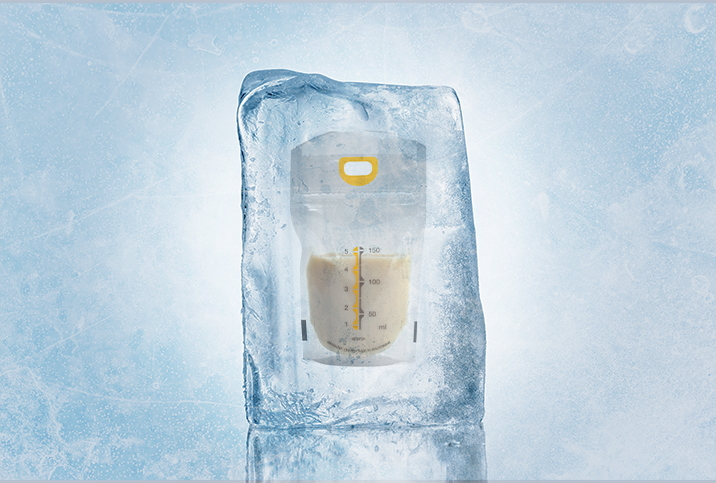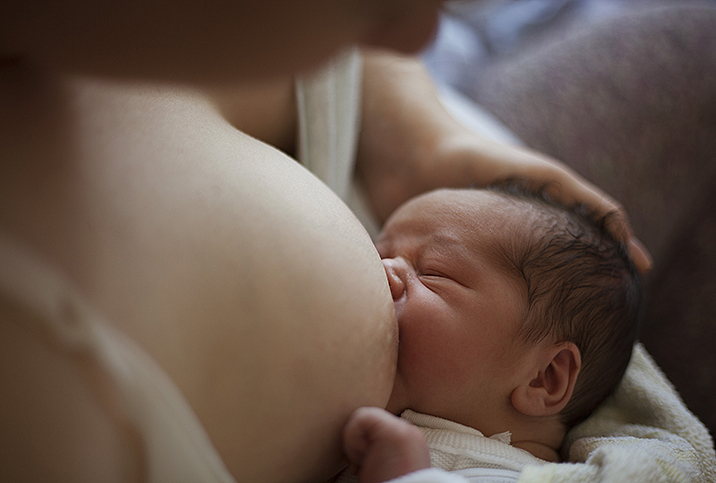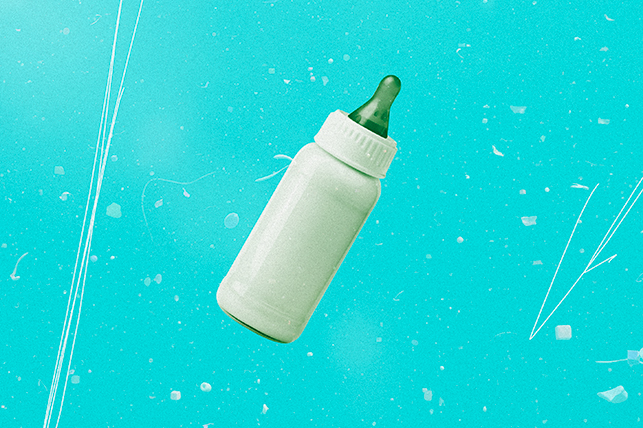What Changes In Your Breast Milk Really Mean

It's not every day that people talk about tasting their breast milk, but it's not unusual that breastfeeding parents (and their partners) occasionally do. And even if you're not tasting it yourself, your baby may give you signs—such as refusing a feeding—to let you know that something in the milk is different. It turns out these changes in taste, smell, color and texture are common and nothing to worry about, and they actually may be happening to meet your baby's needs.
"Breast milk is changing all the time," said Natalia Hailes, a birth doula, lactation specialist and reproductive health advocate based in Richmond, Virginia. "In fact, the specific composition of breast/chest milk is constantly changing to fit the baby's needs. One theory is that there's a vacuum effect when the baby sucks on the nipple, delivering fluids from their mouth—a mix of milk, saliva, snot—back into the milk ducts of the breast/chest. This is thought to give information to the parent's body on what the milk's composition should be for the baby's unique needs at the time." In short, it's pretty amazing.
The fat content of the milk is changing
If you're noticing that each feed starts with thinner, whiter milk and is more yellow and thicker by the end, that's most likely due to fattiness in the milk. "Typically at the start of a feed, there's less fat content and as the milk flows the fat content increases," Hailes said. She explained that this is because the fat globules in the milk stick to the walls of the alveoli, a small sack in the mammary gland where milk is made, and as the breast/chest empty with feeding, the fat globules start to move out.
If you want more consistent texture through the feed, Hailes said, you could try doing breast compression, which is massaging the breast before feeding. She uses the analogy of shaking or stirring a yogurt before eating it to explain how this massage helps incorporate the fat with the rest of the milk.
Your diet could affect the taste of your milk
Anything you eat has the potential to alter the taste of your milk, but that doesn't mean your baby will like it any more or less. "The things I hear most commonly cited [as changing the taste or color of milk] are asparagus, spicy foods, cinnamon, onion, garlic, pineapple and any foods that have some kind of dye in them," said Katie Clark, a certified lactation educator and founder of Breastfeeding Mama. She added that certain medications can affect the taste as well and she recommended having a varied diet, "simply to expose baby to different foods in attempts of encouraging an adventurous palate later on."
Usually, your milk will be completely fine for your baby regardless of what you've eaten (unless that includes a lot of alcohol or caffeine), but Clark said if you start to notice a pattern of your baby refusing to nurse after you've eaten certain foods (for example cow's milk dairy), it might be an indicator that that food is not sitting well with them.
Your milk was thawed
If you're noticing a soapy or metallic smell or taste in your milk that is especially potent when your frozen milk is thawed, it could be that you have a high concentration of an enzyme known as lipase, whose function is to help the baby break down fat in the milk.
"This doesn't mean the milk is bad or harmful for the baby at all," Hailes said. "However some babies don't like the change in taste and reject the expressed milk."
Clark added that you can also try mixing the thawed milk with fresh milk, which will even out the taste. If you have the energy, you can try scalding the milk before storing it. The metallic or soapy taste becomes more prominent the longer the milk sits (which is why it is mostly noticeable in thawed milk) and scalding helps bring the taste back to baseline.
"My weary self didn't have the energy to add yet another step to the bottle feeding process," said Whitney, a mother of three and founder of Mama Manages, of scalding. "Instead, I added a single drop of vanilla extract to every bottle of breastmilk he refused. It was enough to do the trick!" Interestingly, some theories suggest that the reason vanilla is a scent that most people like is because breast milk smells similar to vanilla, and if you're planning to try this method, just make sure the extract is alcohol-free.
You're ovulating, menstruating, or pregnant
It's possible to get pregnant while you're still breastfeeding and if you're doing both at the same time, you can expect to see some changes in your milk around week 20 of pregnancy when "the body starts producing colostrum and continues until the first few days after birth—colostrum's composition, taste and texture is very different from mature milk," Hailes explained. People also self-report that their milk tastes saltier during ovulation and menstruation. Because of hormonal fluctuations, the milk is saltier as sodium and chloride increase and lactose decreases.
You could have a cut or a nipple abrasion
Another change that can be jarring but is okay is noticing that your breast milk looks pink or rust-colored. The shade can vary, but this is typically due to nipple abrasions as a result of irritation from the baby swollen blood vessels inside the nipples, high suction or poor fitting flanges in the pump. Simply put, this pink or rust color is caused by your blood entering into the milk. Yes, it seems icky, but it's completely safe to pass on to your baby.
It seems at least a little odd if you look down and notice your breast milk is a light pink color, smells like soap or tastes metallic or extra salty. Rest assured that all of these things are typical and should not affect your baby's ability or interest in feeding. If you find that your baby is refusing your milk regularly, you may want to check in with your doctor or your child's pediatrician to see if something you are eating may be irritating their stomach. Otherwise, having some funky (looking/tasting) breast milk is nothing to sweat.


















